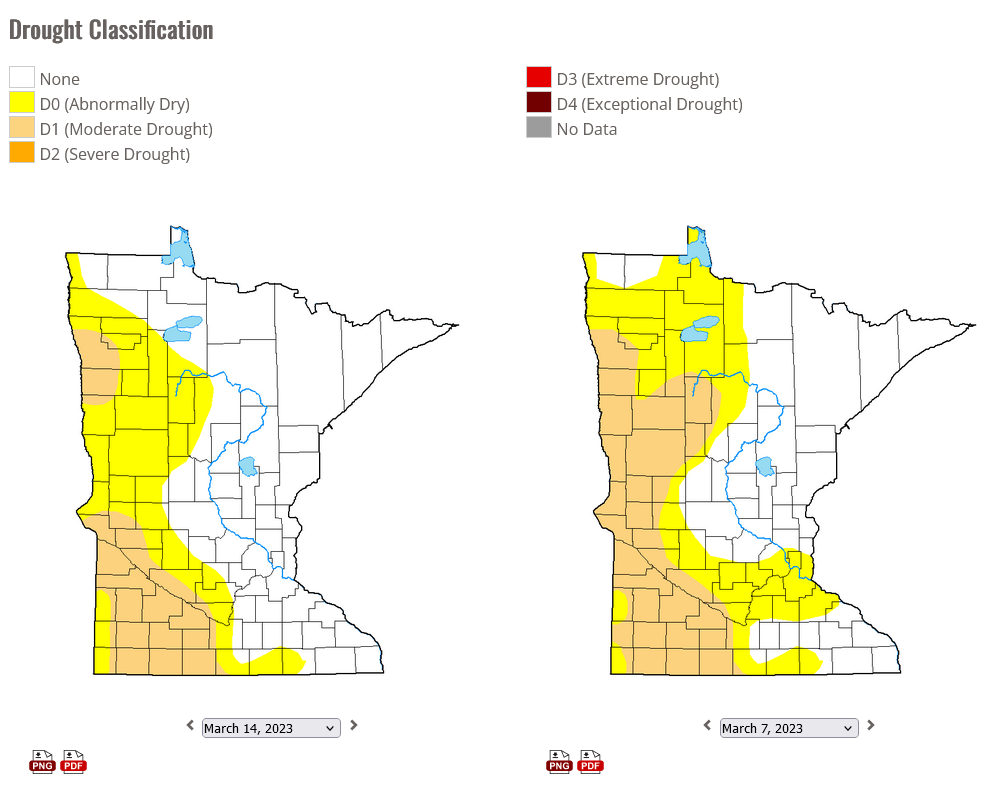New drought report shows Twin Cities metro, western Wisconsin now out of dry conditions
A report released Thursday by the U.S. Drought Monitor shows conditions are improving across Minnesota, and no abnormally dry conditions are listed in Wisconsin.
According to Thursday’s report, which has data valid as of 7 a.m. Tuesday, March 14, the entire Twin Cities metro area is no longer listed as having abnormally dry conditions, which was the case during last week’s report.
Although the western half and southern portions of the state are still experiencing dry conditions, moderate drought conditions have decreased to 15.6% in Minnesota, with 41.4% of the state experiencing at least abnormally dry conditions. Those are down from last week’s percentages of 27.2% and 56.4%, respectively.

Just three months ago, Minnesota still had nearly 4.9% of the state experiencing extreme drought conditions, according to the Drought Monitor.
This latest report comes as the Twin Cities is currently at its eighth-snowiest winter on record, with 80″ having fallen. On average, the area experiences 51″ of snow, and the record was set during the winter of 1983 and 1984 when 98.6″ of snow fell.
Another system that is bringing both rain and snow to the area will move through Thursday afternoon and end during the overnight hours. Chief Meteorologist Ken Barlow says the Twin Cities area could see anywhere from 2-4″ of snow, with some isolated 5″ totals possible in the area. Those totals are in addition to the amount of rain that began falling Thursday morning. CLICK HERE for the latest forecast.

Credit: Pixabay
In Wisconsin, there are no areas listed as having at least abnormally dry conditions, the first time the state has experienced that in more than a year. One year ago, nearly 9% of the state was suffering from a severe drought, and more than 88.3% of the state had abnormally dry conditions.
During last week’s report, abnormally dry conditions were reported in less than 1.5% of Wisconsin and were limited to Pierce, Pepin, and St. Croix counties.